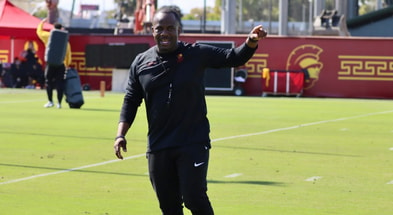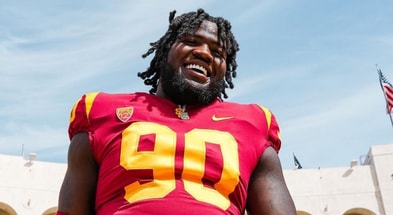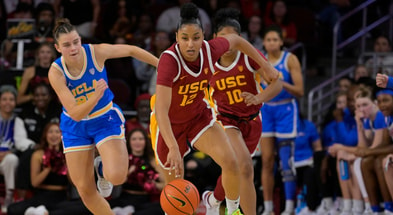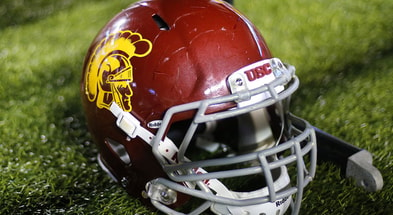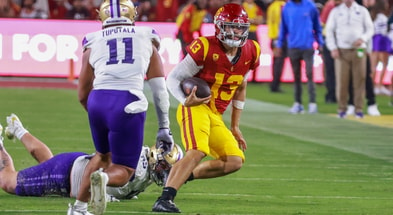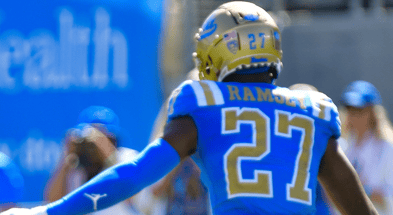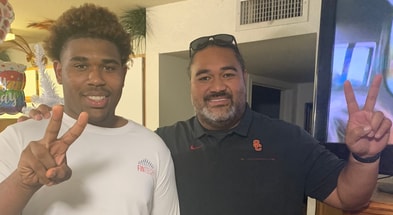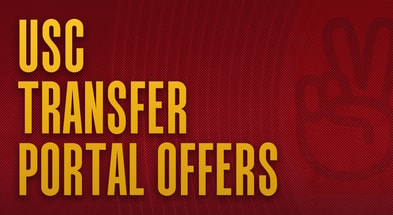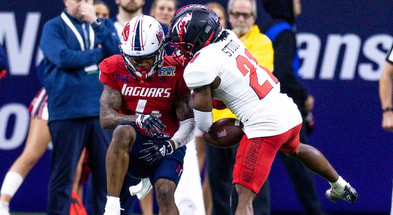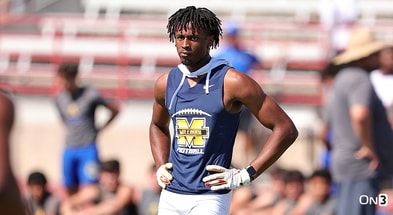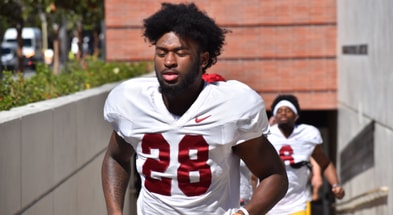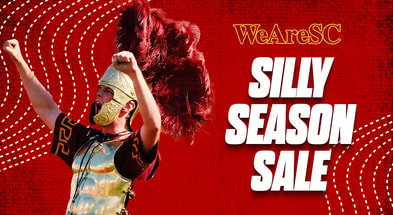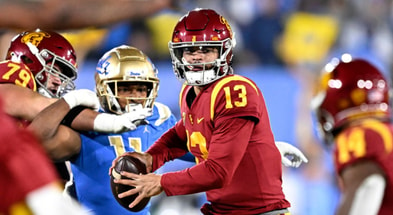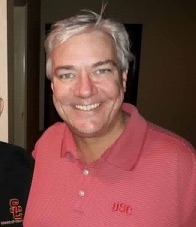O/NSO: The USC Mount Rushmore series – The Quarterbacks
The Obvious: In the modern era,the USC Trojans football program has a long history of producing good to outstanding to elite quarterbacks.
The Not So Obvious: There are “obvious” selections for a four-man O/NSO Mount Rushmore quarterback group, namely those two “no-brainer” Heisman Trophy winners, but then there are the remaining two selections, which may be less evident. So, that being said, here’s our four-man Mount Rushmore for USC Trojans quarterbacks.
As always, feel free to dissent from our selections and tell us your own selections on the Garry P. WeAreSC message board. A reminder, our selections are not ranked in order of greatness but as a group and not by what they accomplished after their playing days at USC.
So, let’s continue with our four quarterbacks for the O/NSO’s USC football Mount Rushmore.
The Obvious: Peter Falconer Beathard (1961-63) was a super athlete who was the starting quarterback on John McKay’s first national championship team in 1962 who also made first-team All-AAWU as a junior.
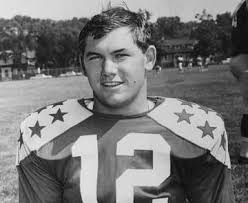
The Not So Obvious: If Beathard had played in today’s spread offense, he would have gone crazy both running and passing. Because Pete played in a different style offense that catered to a power running game and shared quarterback duties in 1962 with his backup Bill Nelson, who went on to have a NFL career of his own, Beathard’s career statistics are rather modest by today’s standards (18 TDs passing, 14 TDs on the ground, 48% completion rate, 15 interceptions, and 3.1 yards per rush).
Let’s also not forget that Beathard also played safety during those days of one- platoon football. A graduate of El Segundo (Calif.) High, Beathard was a major part of the Trojans’ wild 42-37 victory against Wisconsin in the legendary 1963 Rose Bowl game. After his playing career at Troy, Beathard was selected in both the 1964 NFL/AFL draft. In the NFL draft, Pete was taken in the first round and fifth overall pick by the Detroit Lions.
In the AFL draft, he was selected in the first round and second overall pick by the Kansas Chiefs, the team he selected to start his professional career. Beathard was voted into the USC Athletic Hall of Fame in 2009.
To get an idea of how great Pete Beathard (pronounced Beth-hard) was, here are two videos below (1962 Duke & 1963 Rose Bowl). FYI, Beathard wore jersey No. 12. The Rose Bowl narration is provided by Trojans’ legendary broadcast voice Tom Kelly.
The Obvious: Rodney Peete (1985-1988) was a tremendous dual-threat athlete, who was a Trojans All-American in 1998 and Heisman Trophy runner-up to Oklahoma State running back Barry Sanders.
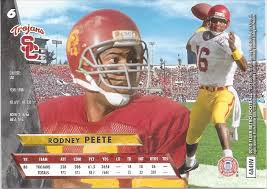
The Not So Obvious: Rodney Peete, who was a prep product out of Overland Park, Kansas/ Shawnee Mission South HS, was 31-17 during his USC career and played in the 1985 Aloha Bowl, 1987 Citrus Bowl, and 1988 and 1989 Rose Bowls (he threw 2 TDs in the 1988 game and ran for two TDs in the 1989 game).
Rodney won the 1988 Johnny Unitas Golden Arm Award (nation’s top senior quarterback) and was the 1988 Pop Warner Award (MVP of the West Coast) and the 1988 Pac-10 Offensive Player of the Year. Rodney was also named twice as the Trojans’ team MVP. To illustrate his athleticism, he also played three seasons with the USC baseball team and was MLB drafted on three separate occasions. Peete is a member of the USC Athletic Hall of Fame (2009).
Below is a Rodney Peete video overview:
The Obvious: Carson Hilton Palmer (1998-2002) was always an ultra-talented quarterback when he came to Troy out of Rancho Santa Margarita (Calif) Catholic High, and one could say that he just needed coaching to totally fulfill his potential. With the arrival in 2001 of both head coach Pete Carroll and offensive coordinator and quarterback coach Norm Chow, Palmer went from potential to production.
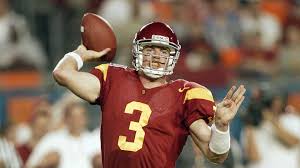
The Not So Obvious: By the time Carson Palmer’s Trojans career had been completed, he was the 2002 Heisman Trophy winner – the Trojans’ first quarterback to do so – and was a leader in helping turn the Trojans football program under Pete Carroll back to national recognition.
Palmer, a four-year starter, set or tied 33 Pac-10 and USC total offense and passing records, including becoming the conference’s career leader in total offense and passing yardage. In 2002, he competed 309-of-489 passes (63.2%) for 3,942 yards and 33 TDs, all conference records. Carson threw for 300-plus yards in a USC-record seven games that season, including three in a row. He also completed at least 60% of his passes nine times. A No. 1 draft pick by the Cincinnati Bengals, Palmer was inducted into the USC Athletic Hall of Fame in 2003.
Below is a video tribute to No. 3.
The Obvious: Matthew “Matt” Stephen Leinart (2002-05) is in the conversation as not only the greatest quarterback in the history of USC football but its greatest player overall. A storybook career at Troy, had the Trojans not lost to Texas in the 2006 BCS title game, Lefty could have also been in the conversation as the greatest college football player ever based on his accomplishments over three seasons.
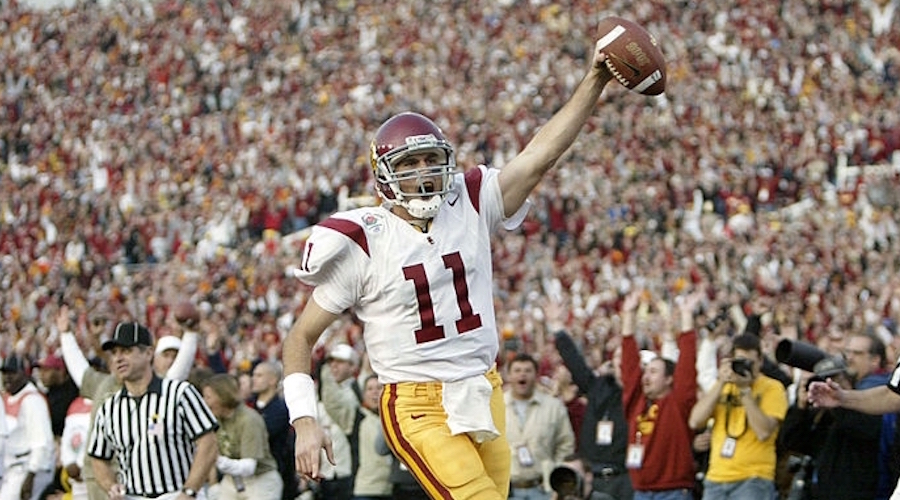
The Not So Obvious: The sixth USC Heisman Trophy winner (2004), Matt Leinart is USC’s second 3-time All-American (2002-03-05) including consensus in 2004. During his career as a starter, the Trojans were 37-2. Leinart, who lead the Trojans to two national championships and another national championship appearance, ranks third on the Tr0jans’s career completions, passing yardage and total offense charts, and his 99 career TD passes set a Pac-10 record. He also set 16 school records during his time wearing the cardinal and gold. In 2004, he completed 65.3% of his passes for 3,322 yards and 33 touchdowns with just six interceptions. Inducted into the USC Athletic Hall of Fame in 2007.
Below is one of Matt Leinart’s greatest games, the 2004 BCS title game against Oklahoma in the Orange Bowl:
The Obvious: And finally, let the quarterback debate begin. Just who is the greatest signal caller in USC history?
The Not So Obvious: Moving on to next Friday, the O/NSO will unveil our four-man Mount Rushmore of running backs and won’t that force some intense debate.
